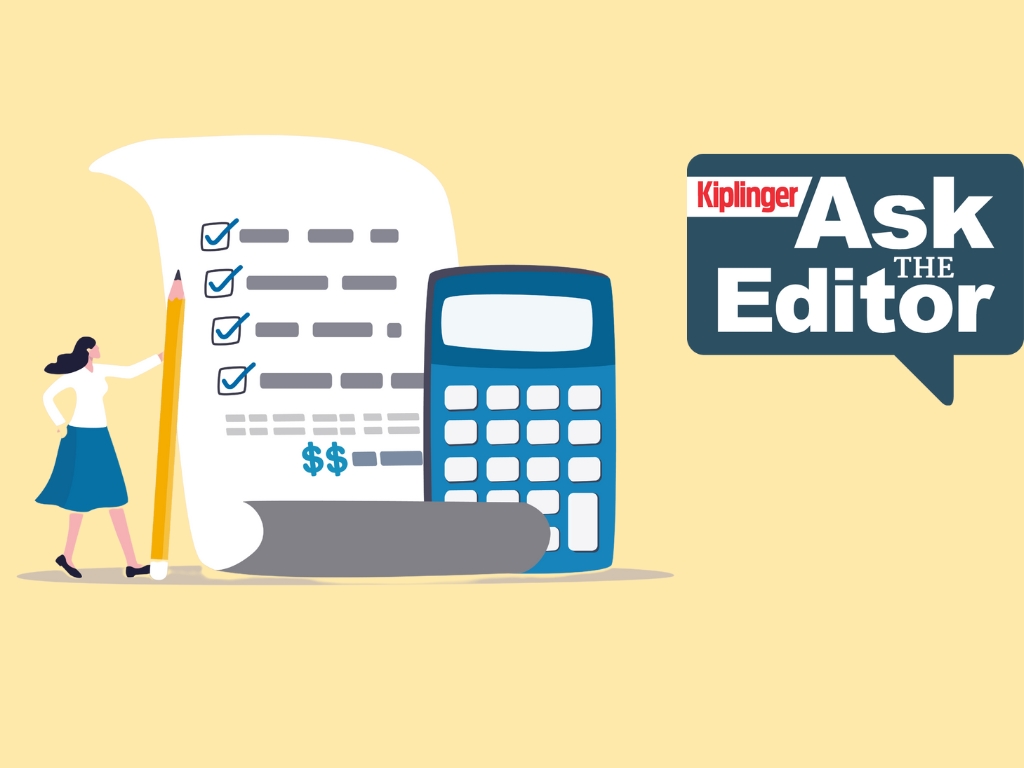My Great Retirement Dream: Sell My House, Downsize, Live off the Proceeds and Dabble in Stocks. Can I Do It?
Retirement is still many years out, but here's what I envision. An expert tells me if it's a realistic plan.


For me, retirement is at least fifteen years away, but that doesn’t mean I can’t fantasize about the future. My great retirement dream? Sell my house once my two kids are off to college, downsize, and use some of the proceeds to dabble in the stock market.
I’ve written about investing and money for years and have always wanted to give it a shot, but life gets in the way.
Marriage, children, childcare, saving for college and retirement, divorce, the list of life events and responsibilities goes on and on. But now I’m itching to give retirement planning a whirl, filling in my dreams for my second act with real-life numbers and strategies.

Sign up for Kiplinger’s Free E-Newsletters
Profit and prosper with the best of expert advice on investing, taxes, retirement, personal finance and more - straight to your e-mail.
Profit and prosper with the best of expert advice - straight to your e-mail.
How I want to live in retirement
Ideally, I would like to have a home or condo near my children, wherever they ultimately land, and another place somewhere more exotic — say, in the Caribbean.
Being a journalist allows me to work long into my retirement years, even if I dial it back to part-time. Plus, if my dream comes true, I’ll be a successful investor making boatloads of money buying the hottest growth stocks. Watch out, Jim Cramer!
How I live now
Currently, I’m in an enviable position, at least on the real estate front. My house has appreciated substantially since I purchased it seventeen years ago. It’s not yet valued at over $1 million, but it’s getting close.
Once the mortgage is paid off and taxes are covered, I should net around $500,000 when I sell my house. That amount assumes home prices in my area continue to grow in the years between now and my youngest child’s high school graduation. Only six more years to go!
I also have retirement savings in a 401(k), but to be honest, not as much as I should. I am ramping that up and plan to take advantage of catch-up contributions in the coming year or two.
My retirement savings are in a target-date fund, which shields them somewhat from the gyrations in the stock market, particularly over the past few weeks. I do plan to collect Social Security, but as of now, I have no clue how much it will be each month.
I try to stay healthy, exercise and live an active life. My family is, by and large, healthy, so I have good genes on my side. (I have not planned for any long-term care I may need as I get older.)
While I have debt, it’s not too out of control. I do like to shop but I’m reigning that in too. There are only a few more items on my must-have list!
Can I do it?
Sounds like an obtainable dream, right?
Not so fast, says Pam Krueger, founder and CEO of Wealthramp, an online service that matches investors with fee-only financial advisers
Ugh.
While it’s possible, Krueger says it’s not the slam-dunk plan that I so confidently assumed. So much for being a genius.
Just because I’m sitting on a little nest egg in my home, Krueger tells me I will have to make some changes now to position myself for the future I envision. I also need to plan a lot more for all the curveballs life tends to throw our way.
That’s a hard pill to swallow. I’m more the “everything will work out” type, rather than the “plan for the next five, ten, fifteen years” type.
“It's a lot of fun opening your mind to the tremendous freedom retirement offers – it’s similar to the feeling you had during summer vacation, but you know it’ll end. Retirement is forever. You have to have the funds to support that freedom,” says Krueger. “The question becomes when I’m looking at the future plan, what do I need to be doing today.”
That’s not to take away from having a vision, she says. There are so many people who have no idea what they will do when they retire or if they can or will continue to work.
“I’ve got this picture in my head of you sitting in the sunset, sipping a cocktail and still getting paid to do great work. You are not ball and chained to a job unless you want to be," says Krueger.
"You don’t have to stop doing what you are doing. Most people don't have that luxury and they have to pick a date to stop working, retire and that's it. You have a huge opportunity here to ensure you'll be supported."
Yay me!
But now for the tough love and reality check.
While I have my house to fall back on and the potential to continue working, I don’t have enough saved for retirement, have no idea how I would cover any long-term illnesses when I get older and am clueless as to how much my Social Security benefits I will receive each month. Plus, I spend a lot of money that I don’t need to.
That eyes-closed, don't worry about it approach may have been fine in my 20s, 30s, and 40s, but now it’s no longer an option.
“You’re not 30 or 40 you can’t mess this up. If you want to get this right and live out this vision, you have to take it extremely seriously,” says Krueger. “You don’t have enough money, but you do have enough time, and that means you will make up for the shortfall in funds if you plan correctly.”
What I need to do to live my retirement dream
First, Krueger says I have to focus on building my safety net. Sure, it’s not as fun as thinking about how I’ll invest or where I’ll sip cocktails as the sun sets, but I need to start assessing where I’m at today.
For starters, I need to know how much my projected Social Security benefits will be each month. That’s an easy one. A visit to the Social Security website will give me that information.
I also need to accept that in my situation, I will likely be working full-time until at least 67, even if I sell my home and move. That will give my Social Security benefits more time to grow and for me to save more in a tax-advantaged retirement savings plan like my 401(k).
I also have to consider some unknowns, such as the value of my house in six years, the state of inflation, the size of my retirement savings account, the impact of taxes, and whether my children will return home after college.
How I’ll allocate the proceeds from selling my home is another consideration. I know I want to downsize, but by how much and where, are things I need to ponder. Plus, what if the unthinkable happens and I get sick? I don’t want to be a burden on my children and loved ones.
“Taxes, inflation and long-term care are looming as huge risks to your plan,” says Krueger. She says now is the time to consider taking out long-term care insurance. If I wait until I’m older and something happens, it could be too cost-prohibitive. “Stress-test all the scary 'what-ifs' right now so you don't find surprises when you need money the most,” adds Krueger.
As for my spending, Krueger says it’s time to be realistic about how I live and identify ways to free up extra money, which can go to my savings.
That could be forcing myself to cook meals at home, or splitting takeout between two meals instead of one. Maybe it means cutting back on my caffeine habit or brewing it at home instead of making those purchases still on my shopping list. Do I really need another pair of jeans or sandals if I work at home? If I cut those little expenses, it can add up to some big savings.
“You have to assess your spending. You can’t get to the vision if you are not willing to do this and be crystal clear who you are and how you live. You have to know what you are spending on,” she says.
After I do all that, I can start thinking about how much money I'll have left to dabble in the stock market. The idea of chasing high-growth stocks is appealing, but I don’t want to invest $10,000, lose it, and have to work full-time well into my 70s.
“There is a huge difference between gambling and investing. Investing is not entertainment. It's boring. It's supposed to be boring,” says Krueger.
At the end of the day
At the end of the day, Krueger says it can be prudent to get the help of a financial adviser. Sure, it may cost me $2,500 or $3,500, but working with a professional could create a blueprint that puts me on the right path.
I admit I'm a little bit overwhelmed by all the things I have to do, but I'm fired up and, for now, will focus on the things I can control, like spending and saving.
I have time to get this right and achieve my great big retirement plan!
Related content
- My Advice for Enrolling in Medicare Part B — Based on Experience
- I'm 50 and My Home Is Worth $5 Million. Can I Retire Now?
- I'm 60, just paid off my $1 million home and have $750K in retirement savings — can I retire now?
- My Husband Is Terrible With Money. I Worry He'll Quickly Spend Our $1.3 Million Nest Egg. How can I Ever Retire?
Get Kiplinger Today newsletter — free
Profit and prosper with the best of Kiplinger's advice on investing, taxes, retirement, personal finance and much more. Delivered daily. Enter your email in the box and click Sign Me Up.

Donna Fuscaldo is the retirement writer at Kiplinger.com. A writer and editor focused on retirement savings, planning, travel and lifestyle, Donna brings over two decades of experience working with publications including AARP, The Wall Street Journal, Forbes, Investopedia and HerMoney.
-
 Five Trusts You Need to Know About and the Best Time to Use Them
Five Trusts You Need to Know About and the Best Time to Use ThemYou can use trusts to cement your legacy, organize your estate and limit your exposure to estate and gift taxes.
By Donna LeValley
-
 Ask the Editor: Reader Questions on 529 plans
Ask the Editor: Reader Questions on 529 plansIn our latest Ask the Editor round-up, Joy Taylor, The Kiplinger Tax Letter Editor, answers questions related to 529 plans.
By Joy Taylor
-
 Five Trusts You Need to Know About and the Best Time to Use Them
Five Trusts You Need to Know About and the Best Time to Use ThemYou can use trusts to cement your legacy, organize your estate and limit your exposure to estate and gift taxes.
By Donna LeValley
-
 Americans Worry More About Going Broke in Retirement Than Dying, Study Shows
Americans Worry More About Going Broke in Retirement Than Dying, Study ShowsInflation, taxes and Social Security are the three top concerns for retirees, according to the 2025 Allianz Annual Retirement Study
By Kathryn Pomroy
-
 Doing This With Your 401(k) Could Cost You $18,000
Doing This With Your 401(k) Could Cost You $18,000Your old 401(k) accounts may be slowly bleeding money — because the power of compounding can work against you, too.
By Christy Bieber
-
 Three Options for Retirees With Concentrated Stock Positions
Three Options for Retirees With Concentrated Stock PositionsIf a significant chunk of your portfolio is tied up in a single stock, you'll need to make sure it won't disrupt your retirement and legacy goals. Here's how.
By Evan T. Beach, CFP®, AWMA®
-
 Before You Remarry: 10 Important Things to Consider
Before You Remarry: 10 Important Things to ConsiderRemarry carefully, because love gets complicated the second time around.
By Jennifer Waters
-
 Despite Economic Uncertainty, Americans Remain Confident About Retirement, Survey Shows
Despite Economic Uncertainty, Americans Remain Confident About Retirement, Survey ShowsSaving and spending is a concern but most workers and retirees think they are on track based on a new survey.
By Donna Fuscaldo
-
 My Advice for Enrolling in Medicare Part B — Based on Experience
My Advice for Enrolling in Medicare Part B — Based on ExperienceEnrolling in Medicare is notoriously complicated and can result in penalties if you get the timing wrong. Here are some valuable tips for first-timers.
By Sandra Block
-
 Before You Invest Like a Politician, Consider This Dilemma
Before You Invest Like a Politician, Consider This DilemmaAs apps that track congressional stock trading become more popular, investors need to take into consideration some caveats.
By Ryan K. Snover, Investment Adviser Representative